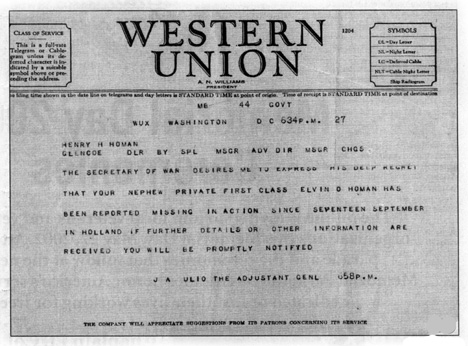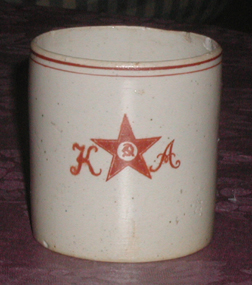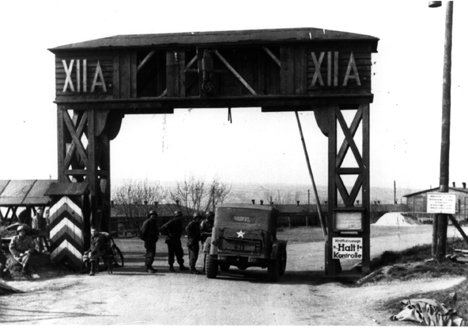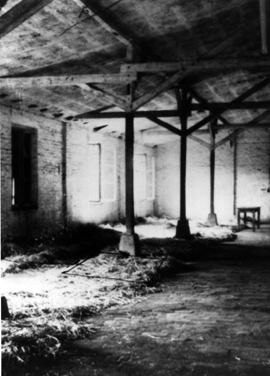|
Jumping Into Trouble Chapter 4 A Prisoner of War Page 1 of 1 Page |
||||||||||||
 |
 |
|||||||||||
| “To our good fortune, we were transferred from the SS to the regular German army. First, we were taken to a monastery where a priest took our names. He promised to pass them on to the Allies. They took our shoes so we couldn't run away. Then we were transported in cattle cars at night into Germany. First, we were taken to Stalag 12A in southern Germany and later moved to Stalag 3C, about 18 miles north of Berlin.” |
||||||||||||
 |
||||||||||||
| “My incarceration lasted a total of about five months. When I hit the ground I weighed about 140 pounds. During that five months, I dropped to about 90 pounds. They fed us very little. We didn't have adequate clothing. My hands and feet froze. We slept on straw on wooden pallets, 100 men to a barracks. We slept as close to each other as possible to preserve body heat. It was cold as all hell! The water was turned off most of the time and when it was turned on it was ‘cold.’ We never thought about shaving. We were given two meals a day — mostly a thin soup. We also received rations from the Red Cross. Each package was shared between two. We used cigarettes as money to barter with the guards. The most valuable item was a wool sweater.” |
||||||||||||
 |
||||||||||||
|
|
||||||||||||
| ”The commandant of the camp wasn't like Col. Klink (from the television series, ‘Hogan's Heroes’). He was a Harvard-educated lawyer. When the war started he returned to Germany. He got shot up and lost an arm. He thought like an American. He was human.”
“My bunkmate was a Frenchman who volunteered to go out to work each day. I couldn't see it. I didn't want to help the enemy by repairing railroad tracks that our boys were bombing. The Frenchman did this because he was looking for a way to escape. He had tried a couple of times and had gotten caught. He eventually came back in a body bag.” |
||||||||||||
 |
||||||||||||
|
Above: Troops of the First U.S. Army shown at entrance to German POW camp at Limburg, where American, Russian, and French prisoners were liberated. Right: Straw-strewn floor of a barn at Nazi Stalag X11A, where hundreds of American POWs were forced to sleep. Each man had only one blanket. All the roofs leaked, and half of the windows were out, and their was no heat. The Americans were fed a bowl of thin soup and a piece of bread a day. Below: The letters POW mark the roof of a barracks at Nazi Stalag XIIA |
 |
|||||||||||
 |
||||||||||||
|
“In late March 1945, the lights went on in the camp in the middle of the night. We were told to fall out or there would be shooting. We were told to take our belongings and be ready to march — a forced march — five miles out of camp. The Russians were coming. The Germans suddenly left us and took off running. We never saw them again.”
End of Chapter 4 — Go to Chapter 5 You may go to Cover Page — Editor's Introduction — Table of Contents Chapter — 1 — 2 — 3 — 4 — 5 — 6 — 7 — 8 — 9 — 10 Atch. #1, The Clay Pigeon — Atch. #2, Escape From III-C Or, you may Home - Contact Us - Cold War Hist. - 91st SRS Hist. - Stardust 40 Mission Story |
||||||||||||